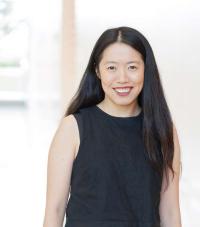
The Political Science of Maternal and Infant Health Trends
Growing up in China, where she studied economics, Columbia Mailman Assistant Professor of Health Policy and Management Nuannuan Xiang was captivated by the theories and practices of state building—defined as the process of creating or strengthening a state’s institutions and capacity to effectively govern. As she advanced through a master’s in social science at the University of Hong Kong and a PhD in political science at the University of Chicago and the University of Michigan, she determined to expand the field’s scope. “State power is everywhere,” says Xiang, noting that public education and the provision of public services, like libraries, offer rich case studies. “My contribution is integrating public health into the scholarship of state-building.”
Xiang’s own research digs into the state-building philosophies embedded in the strategies to promote maternal and infant health implemented by Japan and the United States in the early 20th century. During that timeframe, maternal and infant health in countries throughout Europe rose and fell in parallel. By contrast, the fates of women and their babies in the two nations diverged. “Japan was good at protecting mothers, not babies,” says Xiang. “The U.S. was the opposite.”
Q: What’s your hypothesis about the roots of each country’s failure to implement policies to protect both mothers and babies?
Xiang: How the state sees its people ultimately shapes how the state intervenes in their bodies and health. The U.S. and Japan represent two extreme cases. At the turn of the 20th century, Japan established an extensive infrastructure to supervise childbirth. In contrast, mass immigration in the U.S. made it difficult to establish such a system. Instead, the U.S. developed visit-based infrastructures to collect information from citizens, which laid the foundation for an infant protection system. Japanese mothers and American infants came under close state supervision—and thus received state care—while Japanese infants and American mothers were left to rely on traditional poor relief or an underdeveloped welfare system.
Q: Today, health insurance is often discussed as an economic and health benefit for individuals. How was it first proposed in the U.S. early in the 20th Century?
Xiang: In the first wave of the health insurance movement, from 1915 to 1920, public health reformers in the American Association for Labor Legislation (AALL) promoted health insurance to improve the economic security of the working class by covering income lost during illness. However, they soon began to emphasize its potential to promote public health. The shift backfired, alienating the original supporters of health insurance—reform-minded physicians and workers. Physicians initially supported the idea of promoting public health, but they came to believe that health insurance was insufficient for that goal. They began to ask: Why not invest directly in local public health infrastructure, rather than pursuing it through insurance? Workers, on the other hand, were alarmed by proposed interventions into their private lives, such as mandatory annual physicals and home visits from public health nurses to inspect sanitation and teach “healthy” living. Many saw these measures as infringements on personal freedom and evidence of an expanding, overreaching state.
Q: What could U.S. policymakers learn from your investigations of early 20th-century trends?
Xiang: High maternal morbidity in the U.S. is not new—it’s a 100-year-old problem that the U.S. has had compared to other industrialized countries. Reading historical work helps us think outside the box; the range of imagination was much wider then. Today, attention is focused on health insurance and Medicaid. That’s important, but we should also think about other solutions, such as how to expand public health infrastructure to provide more primary care for women and children. A century ago, most communities didn’t have hospitals and ob-gyn care. They had trained nurse-midwives willing to work in remote areas and do home visits; they trained a lot of public health nurses to teach women and do prenatal training at home. Those interventions sometimes also included economic relief and other complementary services when local charities and governments cooperated in maternal and infant protection.
Q: You teach mixed methods and data analysis for public health students. What are your goals in the classroom?
Xiang: I teach a lot of hard skills: data analysis, inference, coding. To know how to interpret your data, you should have deep knowledge to help you contextualize the data. That’s how theory, qualitative work, and scholarship in public health, political science, and social science enter into data analysis. That context guides students on how to integrate the data.
